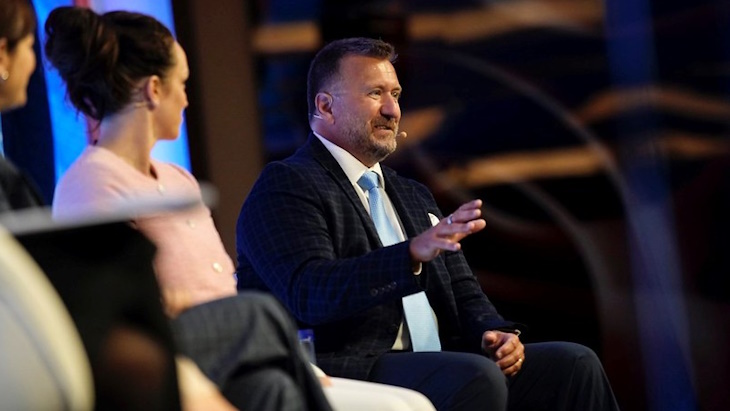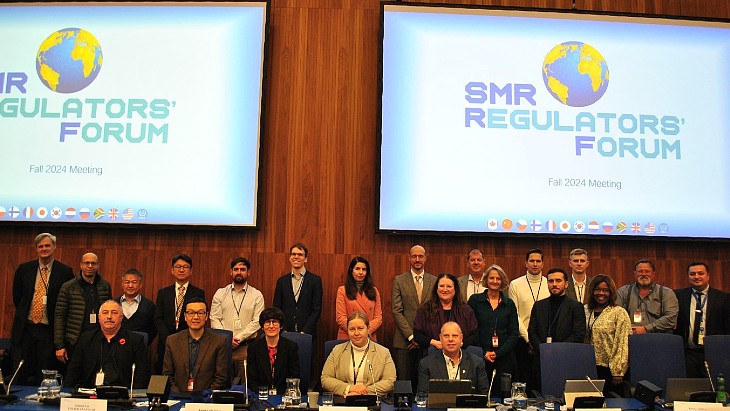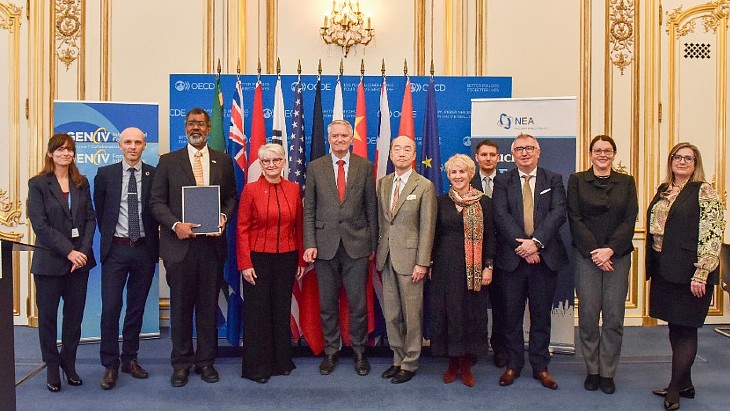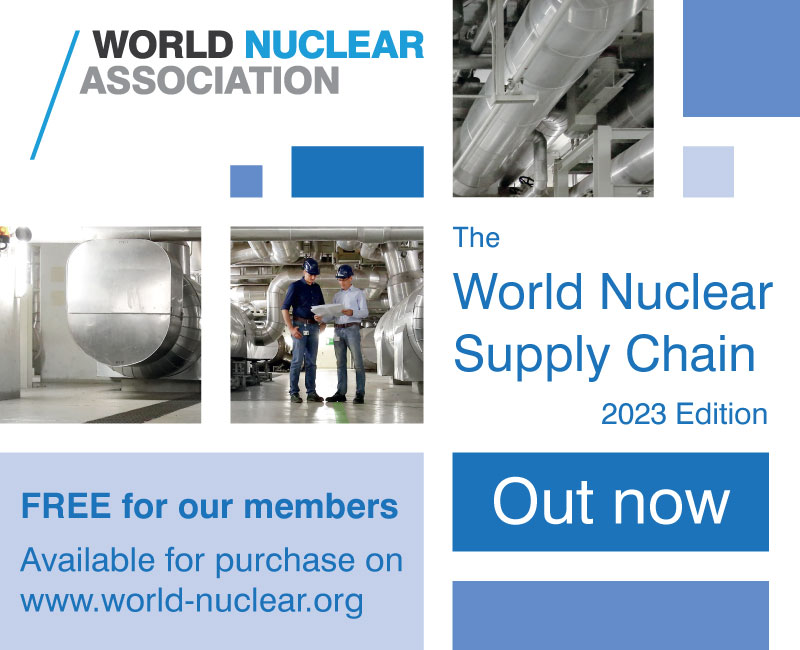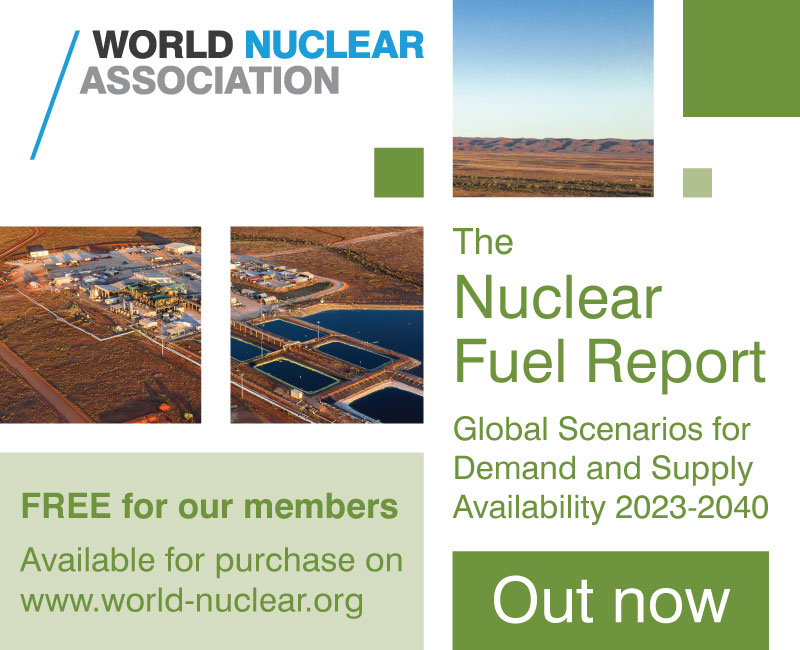Russia achieves serial nuclear power plant construction
Russia has increased its competitive edge in the nuclear plant construction market through the serial production of new reactors, the head of NIAEP-JSC ASE said yesterday. The company was formed in 2012 from the merger of Rosatom subsidiaries Nizhny Novgorod design institute and Atomstroyexport in order to consolidate Russia's nuclear power engineering expertise into a single division. Last year, it absorbed Atomenergoproekt.
NIAEP-JSC ASE director Valery Limarenko spoke to reporters in Moscow during Atomexpo, Rosatom's annual conference and exhibition.
"Something we have and no one else does is that we have learned to replicate nuclear power plants," Limarenko said. "Ask anyone else at this exhibition involved in nuclear power plant construction or operation if it is possible to build the same project in different countries. They will tell you that it isn't because a unit is tailor-made for each client."
Limarenko was referring to the different requirements among plant customers regarding seismicity, climate, water temperature, design regulations, localisation and investment.
"Serial production of nuclear power plants for construction around the world is a very difficult thing to do, but we have managed it because we are building a series of standard designs with various options covering seismicity, climate and the other parameters. Our competitive ability is very high because a company that can build a series of projects, has a very strong position on the market," he said.
NIAEP-JSC ASE consists of more than 20 entities, Limarenko said, with the major players being Atomstroyexport, which specialises in the construction of overseas nuclear power plants; NIAEP, which builds units in Russia; and general design company Moscow Atomenergoproekt. It also includes engineering company Spetzenergomontazh and Nikimt-Atomstroy, which designs and builds used nuclear fuel facilities.
The enlarged company employs 18,500 people at its Moscow and Nizhny Novgorod offices, of which 4000 are nuclear power plant designers.
Five victories
The company had five "victories", or highlights, last year, he said. The first was the start-up of unit 3 of the Rostov nuclear power plant near Volgodonsk in Russia two months ahead of schedule, in December. The same month, unit 1 of the Kudankulam nuclear power plant entered commercial operation. The third victory was the signing, also in December, of an intergovernmental agreement for Russia to build two new reactors in India. The fourth was the signing in November of a protocol to an intergovernmental agreement to build two new reactors in Iran. In December, Russia also signed a contract for the Paks Phase 2 project in Hungary.
NIAEP-JSC ASE had a portfolio in 2014 worth about $60 billion and it plans to beat that figure in 2015, Limarenko said.
Thanks to its formation from other Rosatom subsidiaries, the company has all the structures required to design, construct and manage all the processes related to procurement and supply, he said. This year, it will further update its project management process with an information support system known as Multi-D. Rosatom has said that this technology enables it to carry out detailed modelling of construction and installation processes based on 3D-object models, which "significantly increases" the quality and speed of its work.
NIAEP-JSC ASE is able to remain within or below the budget of its projects, Limarenko said, thanks to its cost management system. "Similar to what designers do when they draw a 3D model of a nuclear power plant, a so-called smart model, we create a similar model in terms of costs," he said. "It is a mathematical model that is not static, but can be developed over time to consider several factors. With the breakdown of labour costs, price of equipment and price of materials, we know how much we have spent and how much we are going to spend at any moment. This system enables us to determine how much a project costs in any country with a link to a specific project and a particular place."
This year
Key tasks for this year, according to Limarenko, are commissioning of "the world's first" Generation III+ reactor - unit 1 of the Novovoronezh II plant. Next, it aims to commission unit 2 of the Kudankulam nuclear power plant, a Generation III project, he said. The third task will be to sign a general contract in Bangladesh where the company has already signed contracts covering the reactor design and the preparatory period of work.
NIAEP-JSC ASE is on schedule with unit 1 of the plant it is building at Ostrovets in Belarus, he said, and unit 2 there will be ahead of schedule. That project is also below budget, he added. This Generation III+ design is also being used for its Leningrad II and Baltic projects, he said. It will also be used for the Hanhikivi and Paks projects in Finland and Hungary, respectively, as well as for the plant it plans to build for Vietnam, he said.
Asked about progress at unit 1 of the Kudankulam plant, Limerenko said the reactor was now operating at 67% of its capacity, while unit 2 has entered the commissioning phase. In addition, India and Russia last year signed an agreement to build units 3 and 4.
"Now we are in negotiations about the design contract for units 3 and 4, which we expect to sign in the next couple of months," he said.
These units will be of the VVER-Toi (typical optimised, with enhanced information) design, which will require a four-year construction period between first concrete and commissioning, he said. Other projects that will use VVER-Toi technology include Kursk II in Russia and Akkuyu in Turkey, he added.
NIAEP-JSC ASE has completed the requirements of the first two contracts for its project in Bangladesh, he said, an engineering survey and the design of the reactor. A third contract will cover the preparatory period before the start of construction.
"I was at the site a month ago and talked with the [Bangladesh] energy minister and we evaluated that everything was going well," Limarenko said.
Asked about the equipment prepared for an Atomstroyexport project the Bulgarian government cancelled in 2012, Limeranko said "I hope the day will come when we get to complete the Belene plant". The main equipment of the nuclear island is ready and is currently in storage. "It's in a normal condition and in reliable hands.”
Limarenko said he was optimistic about the company's prospects in Iran.
Unit 1 at the Bushehr nuclear power plant is a VVER V-446 pressurised water reactor unit, which began commercial operation in September 2013. German constructor Siemens KWU began work on two pressurized water reactors at the Bushehr site on the Persian Gulf in 1975, but work was abandoned in 1979. Russian companies later completed the project. Construction of unit 2, a VVER-1000 reactor, is to start this year.
Unit 1 is currently in a two-year warranty period, during which Russian nuclear specialists remain at the site on a consultative basis and to provide technical support. That period ends soon, Limarenko said, "and we are planning the handover in September". NIAEP-JSC ASE is now carrying out general survey works for units 2, 3 and 4, he said, referring to an agreement signed in November last year for Russia to build up to eight new nuclear power reactor units in Iran - four at Bushehr and four at another, yet to be determined site.
Asked about the potential impact on the projects of the P5+1 talks with Iran on the country's nuclear program, Limarenko said he expected sanctions against the country to be lifted soon.
"As I understand it, these talks have been very tough, but are developing to the mutual satisfaction of all parties involved to support Iran in its pursuit of the peaceful atom," he said. We expect that after the end of the talks, all sanctions [against Iran] will be lifted and our cooperation in nuclear power plant construction in Iran will continue. We have the framework of an existing contract."
Researched and written
by World Nuclear News
_49833.jpg)
_59102.jpg)

